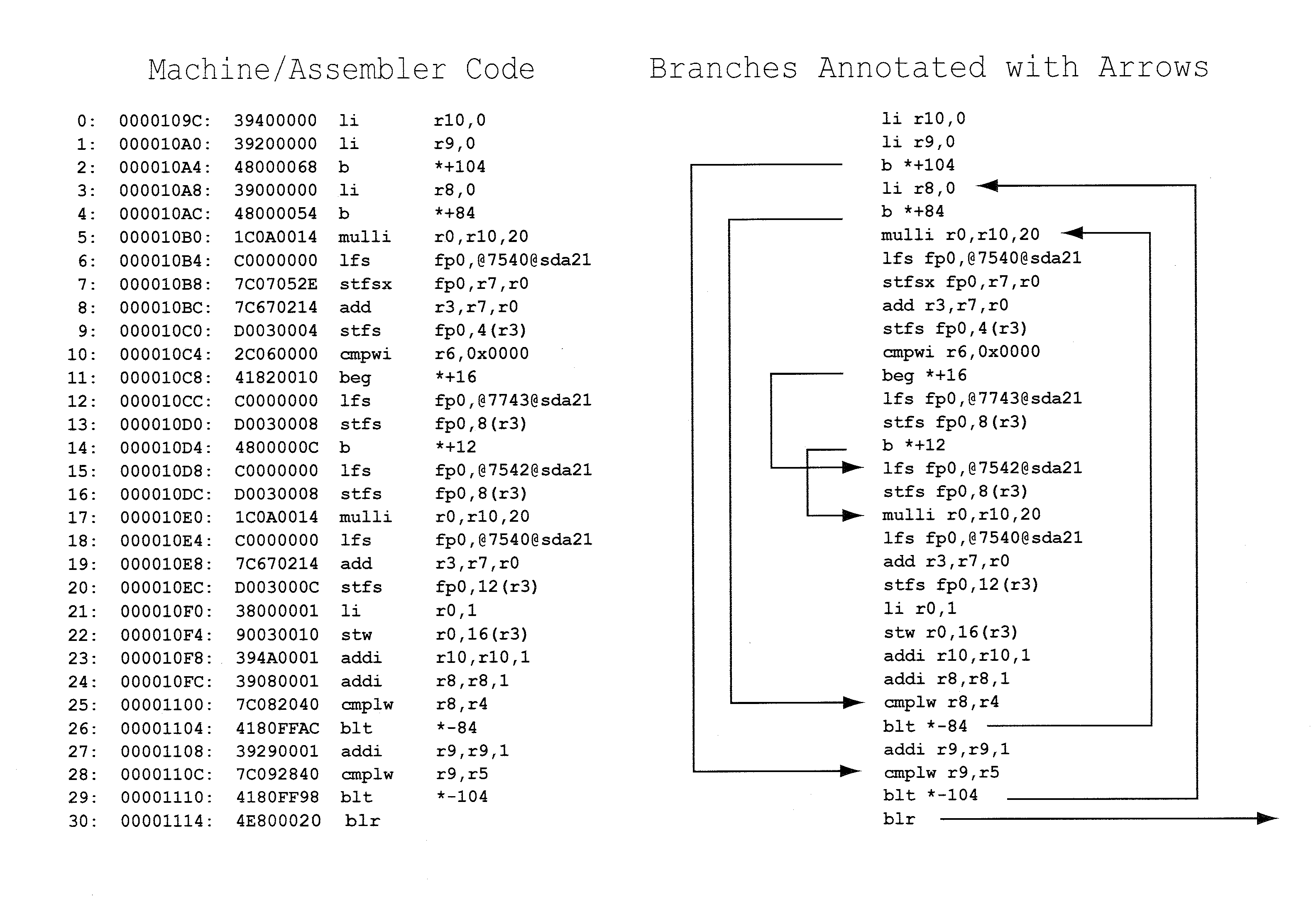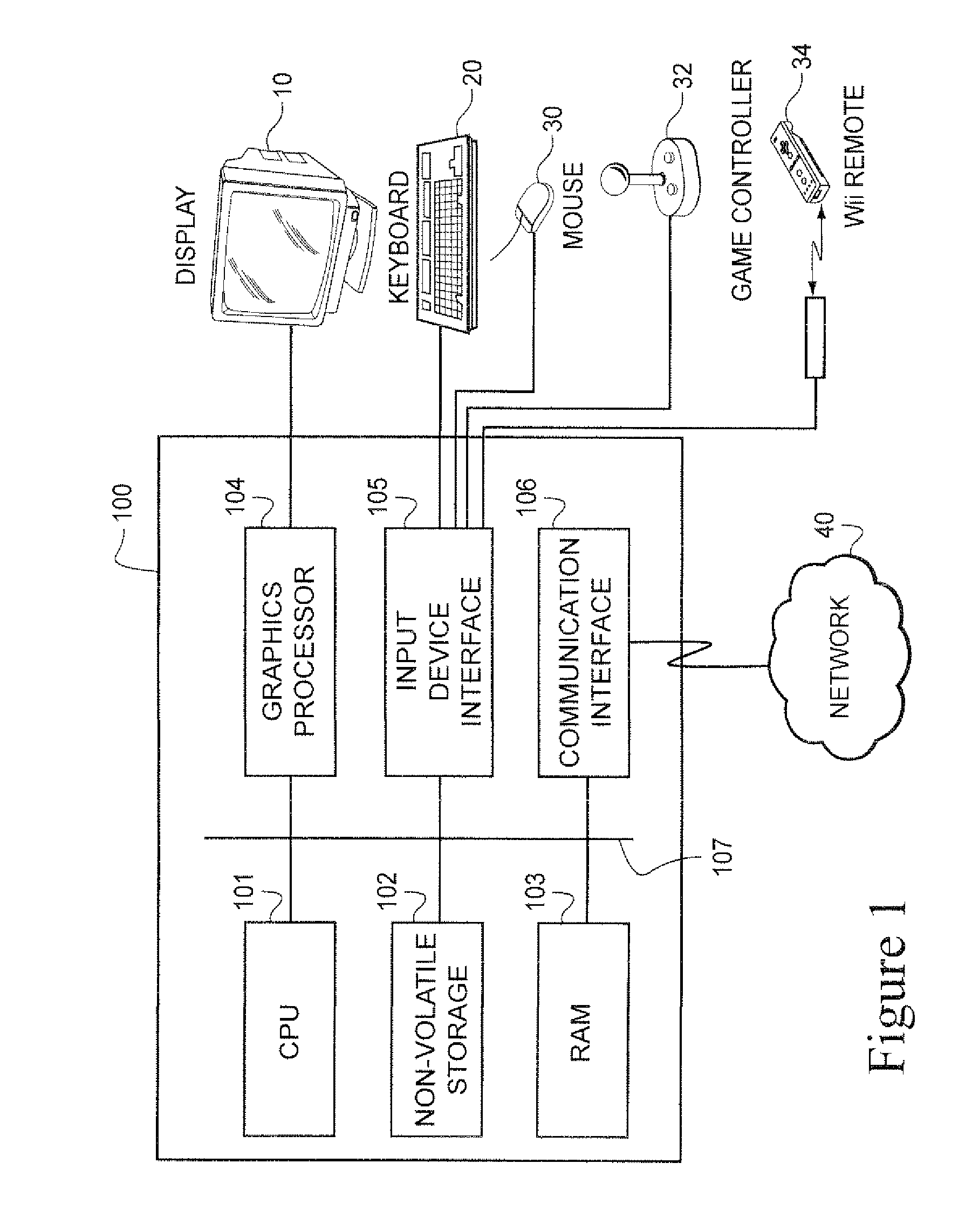Method and apparatus for enhancing comprehension of code time complexity and flow
a technology of applied in the field of methods and apparatus for enhancing comprehension of code time complexity and flow, can solve the problems of inability to provide rich cross-platform software functionality, inability to execute higher level languages directly, and difficulty in writing binary code, etc., and achieve the effect of eliminating incorrect higher time complexity
- Summary
- Abstract
- Description
- Claims
- Application Information
AI Technical Summary
Benefits of technology
Problems solved by technology
Method used
Image
Examples
examples
The strongly connected subgraph method described above can be used for example to detect time complexity for the following example assembly code programs.
Example Assembly Program #1
1: Do work2: Do work3: Do work4: Conditionally branch to line 35: Conditionally branch to line 76: Do work7: Conditionally branch to line 28: Do workStep 1: Create a code flow graph1 → 22 → 33 → 44 → 3, 4 → 55 → 6, 5 → 76 → 77 → 2, 7 → 88 → nullStep 2: Identify strongly connected subgraphs11,21,2,31,2,3,41,2,3,4, (3)Found strongly connected subgraph: 3,41,2,3,4,51,2,3,4,5,71,2,3,4,5,7, (2)Found strongly connected subgraph: 2,3,4,5,71,2,3,4,5,7,81,2,3,4,5,61,2,3,4,5,6,71,2,3,4,5,6,7 (2)Found strongly connected subgraph: 2,3,4,5,6,71,2,3,4,5,6,7,8List of all strongly connected subgraphs:2,3,4,5,6,72,3,4,5,73,4Step 3: Create collections of strongly connected subgraphsCollection A:3,4Collection B:2,3,4,5,6,72,3,4,5,7Step 4: Create a collection graphB → AStep 5: Analyze the longest path in collection graphColl...
PUM
 Login to View More
Login to View More Abstract
Description
Claims
Application Information
 Login to View More
Login to View More - R&D
- Intellectual Property
- Life Sciences
- Materials
- Tech Scout
- Unparalleled Data Quality
- Higher Quality Content
- 60% Fewer Hallucinations
Browse by: Latest US Patents, China's latest patents, Technical Efficacy Thesaurus, Application Domain, Technology Topic, Popular Technical Reports.
© 2025 PatSnap. All rights reserved.Legal|Privacy policy|Modern Slavery Act Transparency Statement|Sitemap|About US| Contact US: help@patsnap.com



